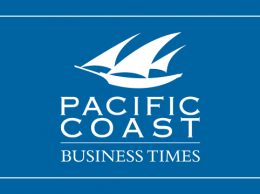Pandemic has hastened ascent of e-commerce, trade expert tells Port of Hueneme
IN THIS ARTICLE
- Latest news Topic
- Jorge Mercado Author
By Jorge Mercado Friday, May 7th, 2021

Since the Great Recession of 2008, the e-commerce trade has grown nearly 20% each year, and the COVID-19 pandemic has only accelerated that trend.
That was one of the themes of a talk on May 4 by Marianne Rowden, the founder of TradeNerd and former president and CEO of the American Association of Importers and Exporters, hosted by the Port of Hueneme. Rowden was the keynote speaker during the port’s annual “World Trade Week,” a virtual affair this year due to the pandemic.
The “great acceleration” of e-commerce trading and shipments was one of the major points of Rowden’s speech, “Transition to Globalization 2.0.”
“Prior to COVID, retailers were primarily concerned with omni-channel sales due to consumer demand. Post-COVID, all businesses need-omni channel sales because the foot traffic has stopped,” Rowden said.
Shipments into the United States of items under $800, classified as “Type 86” shipments by the U.S. Customs and Border Patrol and often consisting of e-commerce items, now outnumber standard “Type 01” shipments into the U.S., Rowden said.
While normal supply chains struggled at the onset of the pandemic, Rowden said, “ironically, the e-commerce supply chain was the only distribution network that was able to sustain that extended lockdown.”
“The pandemic has solidified consumer behavior to an online environment and I don’t think we’re going back,” she said.
And, as consumer demand grows for products being delivered quicker, Rowden said she expects more of the supply chain to be managed by machines.
“That’s why the e-commerce platforms are having such a big impact on those of us who’ve dealt with traditional trade,” Rowden said. “It’s not going to be the end-all, be-all of everything, but it will be an important tool. There are warehouses that have no people and you will see a lot more of that and there are drones that continue progressing as well.”
Rowden also addressed the trading relationship between the United States and China. “The public has become disillusioned with the benefits of international trade, especially with China, and this has been growing for many years,” she said.
Part of that could be attributed to tariffs imposed on China by the United States during Donald Trump’s term in the White House. These tariffs started in March 2018, when Trump announced $50 billion worth of tariffs on Chinese imports in response to alleged theft of U.S. intellectual property and technology violations.
“They are still there, and we’ll see how long they stay,” Rowden said.
In March 2021, U.S. President Joe Biden extended tariffs until at least September.
The tariffs increased the costs for companies producing in China. As a result, Rowden said, many are trying to move production out of China.
“But other countries may not have the production capacity of China to serve the U.S. market,” she said. “Others may not have good logistics infrastructure and others may not have the technical expertise.”
For American firms, bringing production back to the U.S. comes with benefits, such as a simpler supply chain, locating production closer to raw materials, avoiding tariffs of 25% and having more control over quality.
“When you produce goods in another country and then have to ship that finish to the market of consumption, you will get a much more complex supply chain, and complexity has been deadly during the COVID-19 period,” Rowden said.










